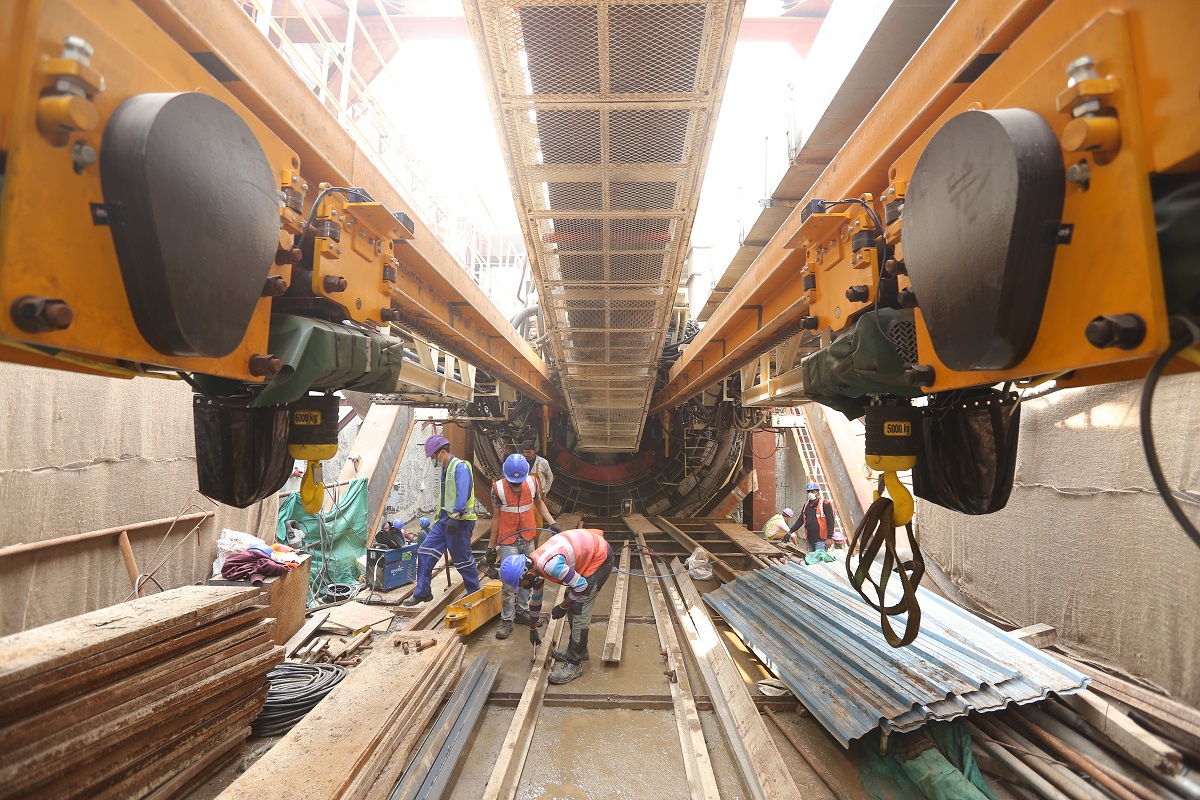NCRTC launches campaign to promote voting for LS polls
Passengers who cast their votes will be eligible for a complimentary upgrade to the Premium Coach from the standard coach as an incentive.
Tunnel rings are being constructed with the help of tunnel segments by the TBM. Normally seven tunnel segments are used to make a tunnel ring.

Photo: SNS
The tunneling work has commenced at Anand Vihar for underground construction of India’s first regional rail corridor being implemented from Delhi to Ghaziabad and Meerut.
For this, about 90 meters long, Tunnel Boring Machine (TBM) has started constructing a tunnel for India’s first RRTS corridor from Anand Vihar towards New Ashok Nagar side. The TBM consists of a cutter head, front shield, middle shield, tail shield, erector, screw conveyer, and many other parts that help in boring the tunnels efficiently.
Tunnel rings are being constructed with the help of tunnel segments by the TBM. Normally seven tunnel segments are used to make a tunnel ring. Tunnel segments for this section are being constructed at the Casting yard of NCRTC with precision and quality control.
Advertisement
With a 6.6 m diameter, the RRTS tunnels are bigger as compared to that of the other Metro systems in the country due to larger rolling stock with a higher design speed of 180 Kmph RRTS trains.
“It will help in reducing the air pressure and discomfort to passengers due to the higher speed of the trains,” said NCRTC in a press statement.
The tunnel of 6.5-meter diameter is being constructed for the first time in India in a mass transit project.
This particular TBM will build around 3km of the tunnel from Anand Vihar towards the New Ashok Nagar side.
Four TBMs are to be launched from Anand Vihar station. Two for a drive from Anand Vihar towards New Ashok Nagar side and two for a drive from Anand Vihar towards Sahibabad side.
The underground stretches of RRTS will have twin separate tunnels for the to and fro movement of the trains. To ensure the safety of the commuters’ various safety measures is being implemented.
There are provisions of emergency escapes for commuters’ safety in case of any emergency. It will also have a cross-passage at around every 250 m.
Decongestion of the National Capital, reducing vehicular traffic & air pollution, and balanced regional development are some of the reasons behind project implementation.
“NCRTC is adopting cutting-edge technology to ensure safe and timely completion of the works while minimizing inconvenience to the road users, local passer-by, business owners, and residents along the entire stretch,” it stated.
Construction work on the entire 82 Km long Delhi-Ghaziabad Meerut RRTS corridor is in full swing. The corridor will have 25 stations, including two depots and one stabling yard.
Advertisement